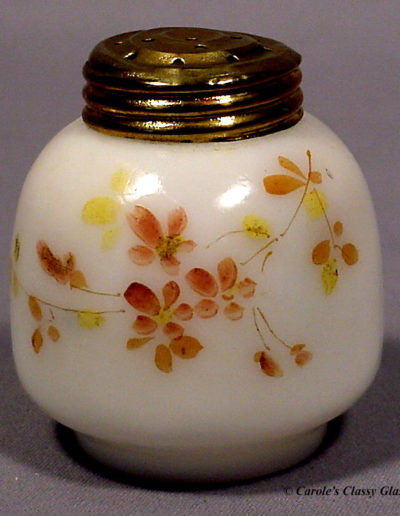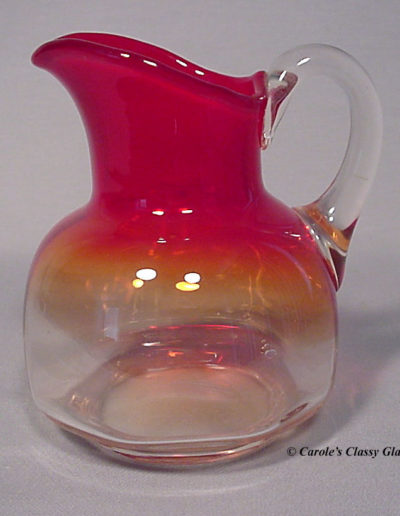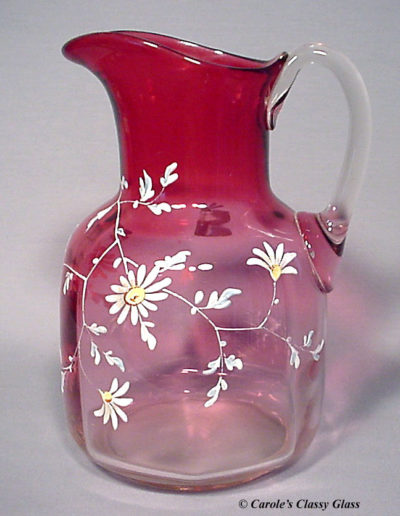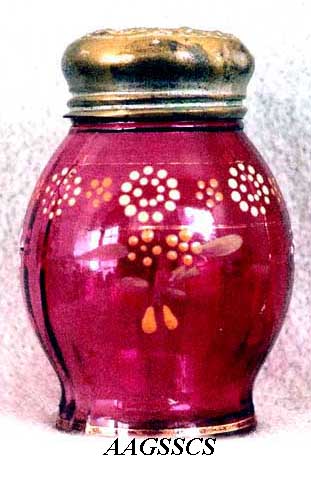Venecia, A Unique Yet Relatively Unknown Pattern
Bob & Carole Bruce
Note: This article was published in the January 2006 issue of “The Pioneer” when Bob Bruce was the webmaster of our AGSSSC website. A discerning researcher, Bob obviously left the “door open” for more evidence on attribution, and now thanks to the discovery of 1894 catalog pages of the Consolidated Lamp and Glass Company, it is finally concluded Consolidated manufactured this pattern from 1894 – 1901. The Rakow Research Library gave permission to AGSSSC for a one-time printing of relevant catalog pages in the July issue of “The Pioneer.” These pages and a commentary on the Venecia pattern may also be seen in a new pattern glass book recently reviewed in our “Library” website section. Please, click here to read this review and learn how to order this informative book.
The attractive Venecia pattern was first listed by Bill Heacock in Volume 3 of his series on Victorian Colored Pattern Glass, 1976. At that time he was not aware of table pieces but felt it should be named and documented. He later showed the table set in an article for the Antique Trader that was also published in his Old Pattern Glass Book in 1981. He listed the known colors as a beautiful shade of cranberry, rubina (cranberry shading to clear), emerald green and green shading to clear. Later he added pigeon blood, usually decorated.
This pattern has always fascinated us because of the unusual colors and color combinations that were used. However, the maker of this pattern has remained a mystery. Heacock noted that the tops on the sugar shaker were the same as used by Northwood, but also notes that that is not much evidence for attribution. The only other shaker pattern that we are aware of that comes in red to clear and green to clear is Medallion Sprig by the West Virginia Glass Company. Comparison of the shades of green and the shades of red do not appear to be the same. We therefore looked at other shakers to see if there was a color match to see if we could get a hint of the maker.
It is of interest, that some colors of the pattern Heacock named Pressed Optic are very similar and appear to be the same chemical composition. The cranberry color and the green color match quite well. The Pressed Optic pattern was made by the Beaumont Glass Company. The mold blown Venecia pattern has inside panels to create the optic effect much like the Pressed Optic pattern. Venecia has eight panels, Pressed Optic has seven, and both therefore are relatively large panels. Both of these patterns have a similar star on the base. The star is created during the dual mold manufacturing process but it is dependant upon the way the optic mold is made and used. The above comments only provide insight into the maker. It is also interesting to note, that Beaumont was a brother-in-law of Harry Northwood. Northwood made similar optic patterns known today as Optica and Venetian. Both of these patterns have a similar inside optic effect although smaller panels.
So, the search for proof of the maker of the beautiful Venecia pattern continues. Was it a single maker that made the dual colors, and another that made the opaque and pigeon blood. Was Kopp involved? Strong correlation exists with other Beaumont shakers. On the other hand, West Virginia Glass is the only maker of salt shakers known that had dual colors in rubina, blue and green. They did make an optic pattern but the panels are narrow and not well defined.
In addition to the colors listed by Heacock, additional colors are now known. The large water pitcher is known in a beautifully decorated Rubina. The shakers are known in decorated opalware. A very rare creamer is known in pigeon blood shading to clear. It is a beautiful and unique color in our experience. When you look at the pictures of the salt shakers, it is fun to think what a complete table set in the color or color combination would look like. How lucky the Victorian lady was to have these patterns to choose from for her table settings.
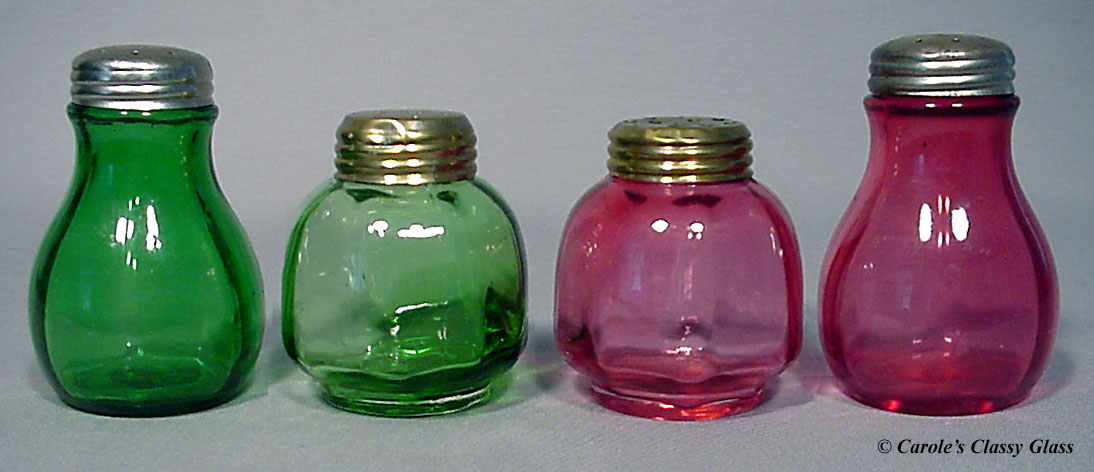
Comparison of Beaumont’s Colors on “Pressed Optic” with “Venecia”
Large Venecia Pitcher in Decorated Rubina; This rare decorated cranberry salt shaker is of the Venetian line by Harry Northwood. It is more commonly seen in a bulbous version. (Reference is the Dugan/Diamond book by Heacock, Measel, and Wiggins.) As mentioned above, “Venetian” is often confused with the “Venecia” pattern.






